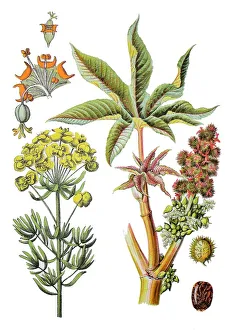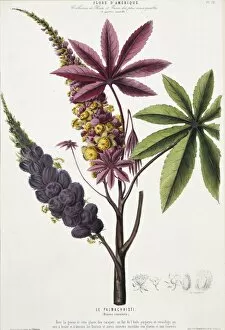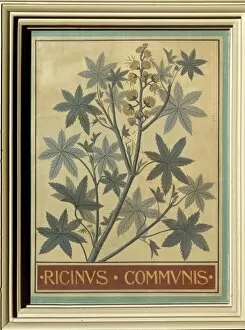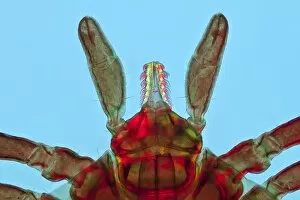Castor Bean Collection
The castor bean, scientifically known as Ricinus communis, is a fascinating plant that has captured the attention of botanists and artists alike throughout history
All Professionally Made to Order for Quick Shipping
The castor bean, scientifically known as Ricinus communis, is a fascinating plant that has captured the attention of botanists and artists alike throughout history. Its unique features and uses have made it a subject of interest in various illustrations and studies. One such illustration is a chromolithograph from Edward Step's book "Favourite Flowers of Garden and Greenhouse" published in London in 1896. This beautifully detailed artwork by Desire Bois showcases the castor-oil plant in all its glory, highlighting its vibrant colors and intricate structure. Another captivating depiction can be found in Basil Besler's renowned work "Hortus Eystettensis. " Published first in 1613, this botanical masterpiece includes an exquisite portrayal of the castor oil plant. The meticulous attention to detail brings out the essence of this remarkable species, capturing its essence for generations to come. Interestingly, the castor bean often finds itself juxtaposed with other plants like Cypress spurge (Euphorbia cyparissias) as seen in certain compositions. This contrast highlights both their similarities and differences while showcasing the distinct characteristics that make each species unique. Beyond its aesthetic appeal, Ricinus communis holds significant importance due to its practical applications. The extraction of castor oil from its seeds has been utilized for centuries across various industries including medicine, cosmetics, lubricants, and even biofuel production. However, it is crucial to note that despite these beneficial properties associated with castor oil derived from this plant; caution must be exercised as some parts contain ricin - a highly toxic substance if ingested or injected. In addition to human use cases, researchers have also studied ticks under light micrographs alongside mentions of Ricinus communis – possibly due to shared namesake rather than any direct connection between them.










